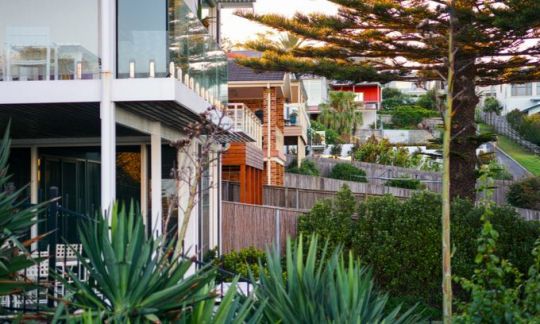Australia housing market: what to expect?

What now for the Australian housing market, after the Reserve Bank of Australia (RBA) threw the proverbial cat among the pigeons with a May cash rate increase? And with more felines expected to be lobbed in over the coming months in the form of further rate increases, how will property prices in Australia hold up?
The Australian housing market as a whole had been slowing down even before the RBA’s intervention, and since then it has begun to go backwards, with the national average dwelling value falling by 0.1% in June 2022. It’s a far cry from the heady days of March 2021 when the national growth figure hit a 32-year high of 2.8% in that month alone.
But the slowdown for property values hasn’t been felt evenly across the country. The major capital cities of Sydney and Melbourne have seen the biggest falls recently. Brisbane and Adelaide saw the biggest increases in the latest data, while regional areas outperformed the cities on average.
CoreLogic home value index results as at 31 May 2022 – all dwellings
← Mobile users scroll to view →
| Median Property Value |
Index % Change |
||
|---|---|---|---|
| MoM | YoY | ||
| Sydney | $1,120,836 | -1.0% | 10.3% |
| Melbourne | $806,196 | -0.7% | 5.8% |
| Brisbane | $779,895 | 0.8% | 27.8% |
| Adelaide | $628,744 | 1.8% | 26.1% |
| Perth | $555,538 | 0.6% | 5.6% |
| Hobart | $738,399 | 0.3% | 17.3% |
| Darwin | $504,306 | 0.5% | 6.4% |
| Canberra | $940,026 | -0.1% | 18.7% |
| Combined Capitals |
$829,390 | -0.3% | 11.7% |
| Combined Regional |
$597,074 | 0.5% | 22.1% |
| National | $752,507 | -0.1% | 14.1% |
Source: CoreLogic Home Value Index Results as at 31 May 2022. Prepared by Canstar on 2/06/2022.
For an idea of where things could go from here for the Australian housing market and to make sense of why interest rate changes can impact the property market and housing affordability, Canstar spoke to Professor Shaun Bond, Frank Finn Professor of Finance at the University of Queensland Business School.
Why do interest rates impact property values?
As most homeowners need a mortgage to buy a house, higher interest rates will increase the cost of borrowing and reduce the borrowing capacity of buyers. Even for investors who might purchase homes with cash, higher interest rates will increase their expectations around investment returns on their cash if they were to keep it outside of property and could reduce their willingness to purchase a property at the current price levels.
Obviously, in reality, many factors and considerations drive house prices, but May’s rate increase and the widespread belief that more interest rate hikes will occur over the coming months will likely slow the rate of price growth in the Australian housing market throughout the rest of this year and into next year.
How far could property prices drop because of the cash rate increase?
Australian homeowners have enjoyed a long period of largely stable or falling interest rates. With rates still at historically low levels for now, the immediate impact of last month’s increase will be modest at best. However, the RBA has signalled that this rise is likely to be the first of several over the rest of this year and into next year, as rates move back towards their pre-pandemic levels. The biggest impact of the RBA’s May rate move is likely to be the shift in expectations about future rate increases and a softening in house price growth.
What areas in Australia could be impacted particularly badly by rising interest rates?
My biggest concern will be the areas with a high concentration of borrowers who have taken on relatively large loans recently and who are already starting to feel the financial pressures of the overall cost of living increases. While banks should have carefully checked that borrowers could afford their mortgage at higher interest rates, the potential combination of several mortgage rate increases over the next two years and increased living costs will be a challenge for some households. This is likely to particularly impact those suburban and regional areas that have seen some of the highest jumps in prices over the last two years, particularly if wage growth does not keep pace with the cost of living increases.
Are there any property markets in Australia that could do well?
The rapid growth in house prices over the last two years and the overall impact of housing costs on inflation are clearly on the mind of the RBA as they look to take some of the heat out of the economy. Even with Tuesday’s increase and more rate rises over the coming months, many parts of the economy are robust and the fundamentals are still in place to provide support for the housing market to continue growing.
This is particularly noticeable in an area like South East Queensland, which is experiencing strong interstate migration and limited housing supply. Also, remember that not all homeowners have a mortgage and that many retirees live off their savings, so many households will not be directly impacted by the rate rise and in some cases, may actually be better off with higher interest rates.
Will apartments become more appealing to buyers?
A feature of the housing market over the last two years has been a widening gap between the price of houses and apartments. Much of this gap was driven by the move away from cities towards the regions because of the increased ability of many people to work from home, the curtailing of overseas migration, and a desire to escape high-density living during the pandemic.
Recently, this trend has started to reverse in many areas, as buyers look for more affordable options and life begins to get back to normal after the disruption of the pandemic. Going forward, it is likely that this narrowing will continue as apartment prices make up some of the lost ground they experienced early in the pandemic, and as affordability constraints limit price growth for houses.
What will higher interest rates and a slowing property market mean for housing affordability?
The move toward higher interest rates will certainly begin to take some of the heat out of the housing market between now and the end of the year. Along with higher rates, some of the policy measures proposed by both political parties are positive, well-intentioned and have the potential to increase affordability.
However, I do not expect a significant jump in affordability any time soon, as many of the challenges around housing supply, low real-income growth, the tax treatment of property, and demographic factors will not be easily addressed any time soon.
Cover image source: Jaaske M/Shutterstock.com.
This article was reviewed by our Deputy Editor Sean Callery and Sub Editor Tom Letts before it was updated, as part of our fact-checking process.

- Why do interest rates impact property values?
- How far could property prices drop because of the cash rate increase?
- What areas in Australia could be impacted particularly badly by rising interest rates?
- Are there any property markets in Australia that could do well?
- Will apartments become more appealing to buyers?
- What will higher interest rates and a slowing property market mean for housing affordability?
The comparison rate for all home loans and loans secured against real property are based on secured credit of $150,000 and a term of 25 years.
^WARNING: This comparison rate is true only for the examples given and may not include all fees and charges. Different terms, fees or other loan amounts might result in a different comparison rate.
 Owner occupied
Owner occupied
 30% min deposit
30% min deposit
 Redraw facility
Redraw facility
Try our Home Loans comparison tool to instantly compare Canstar expert rated options.





